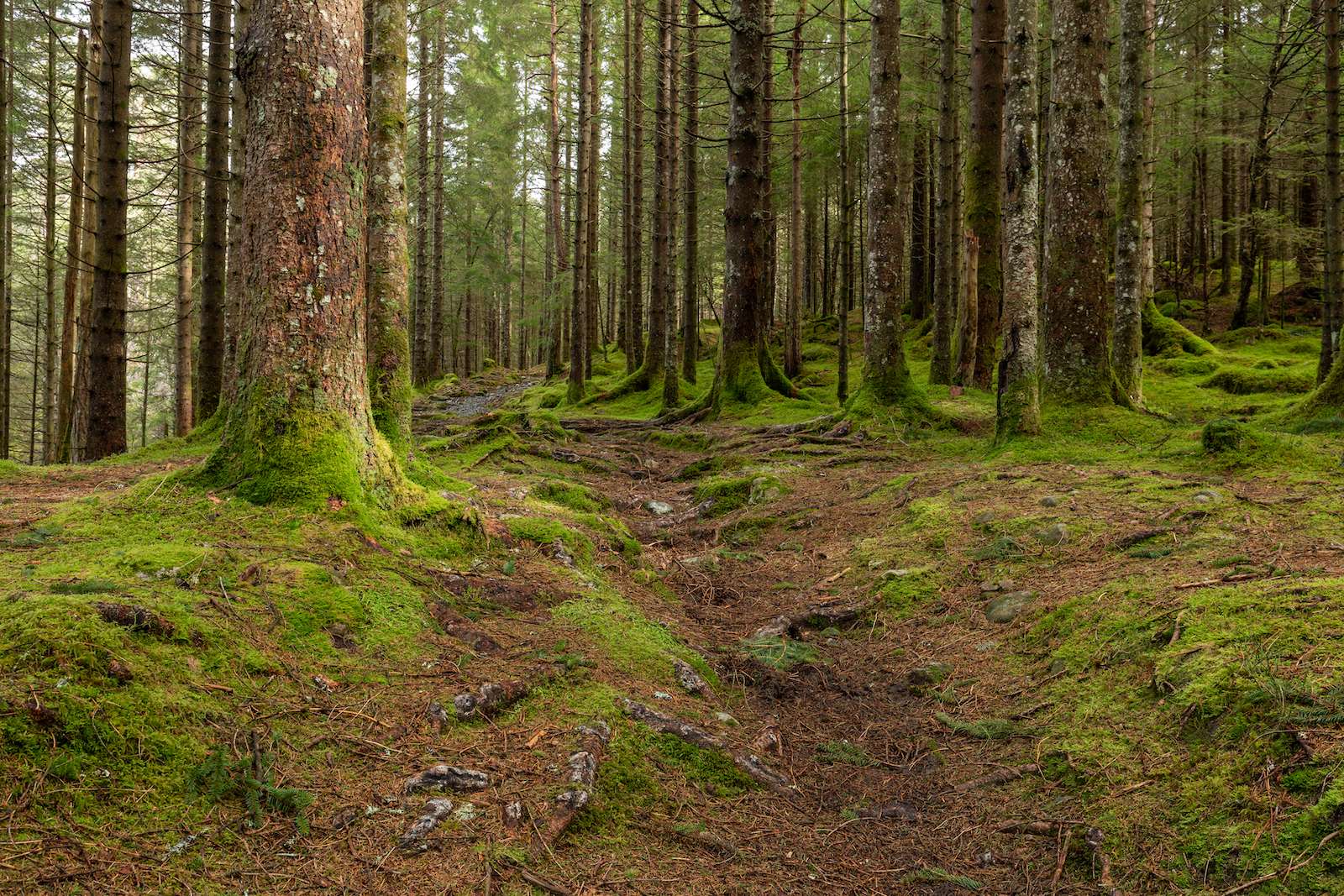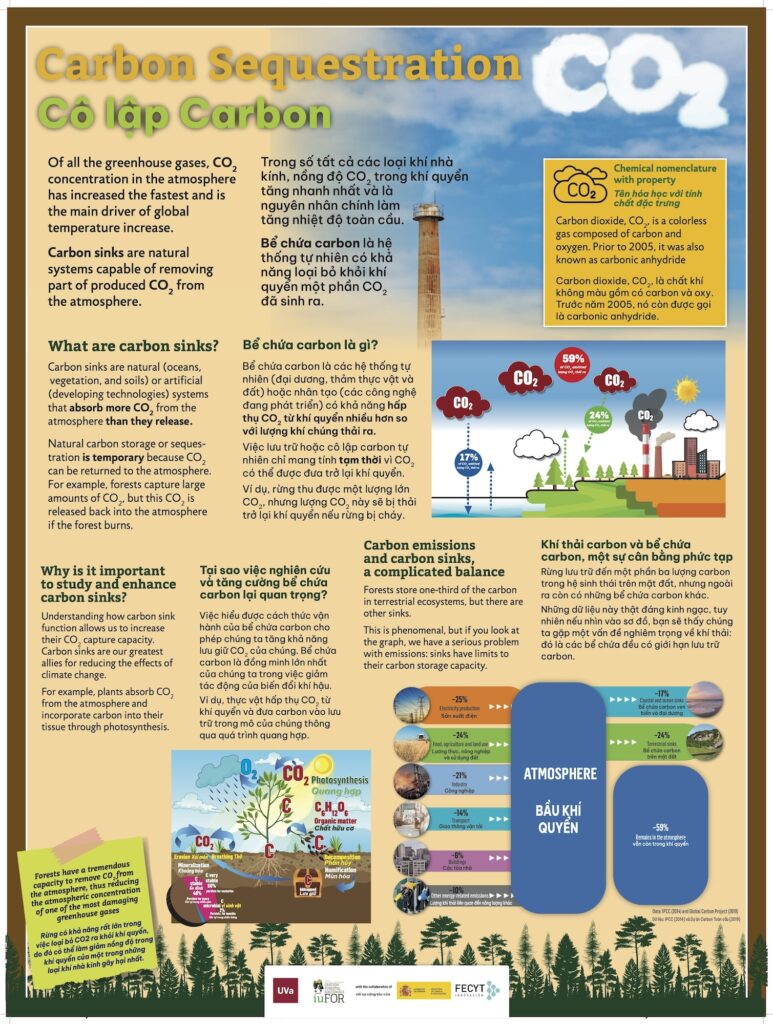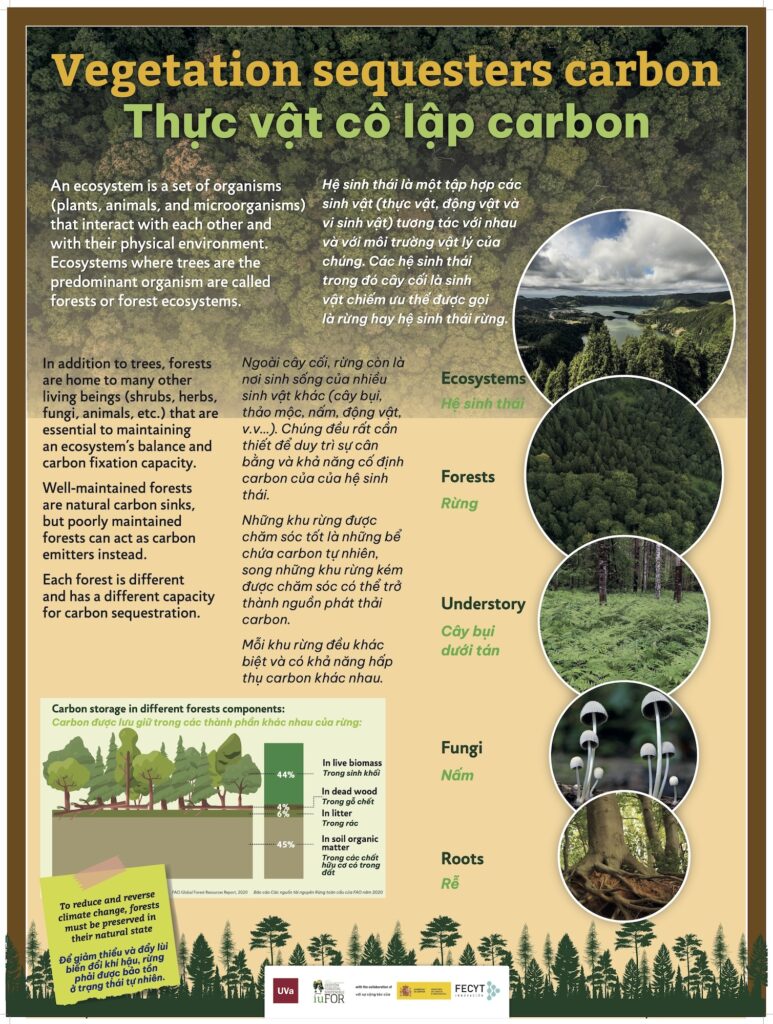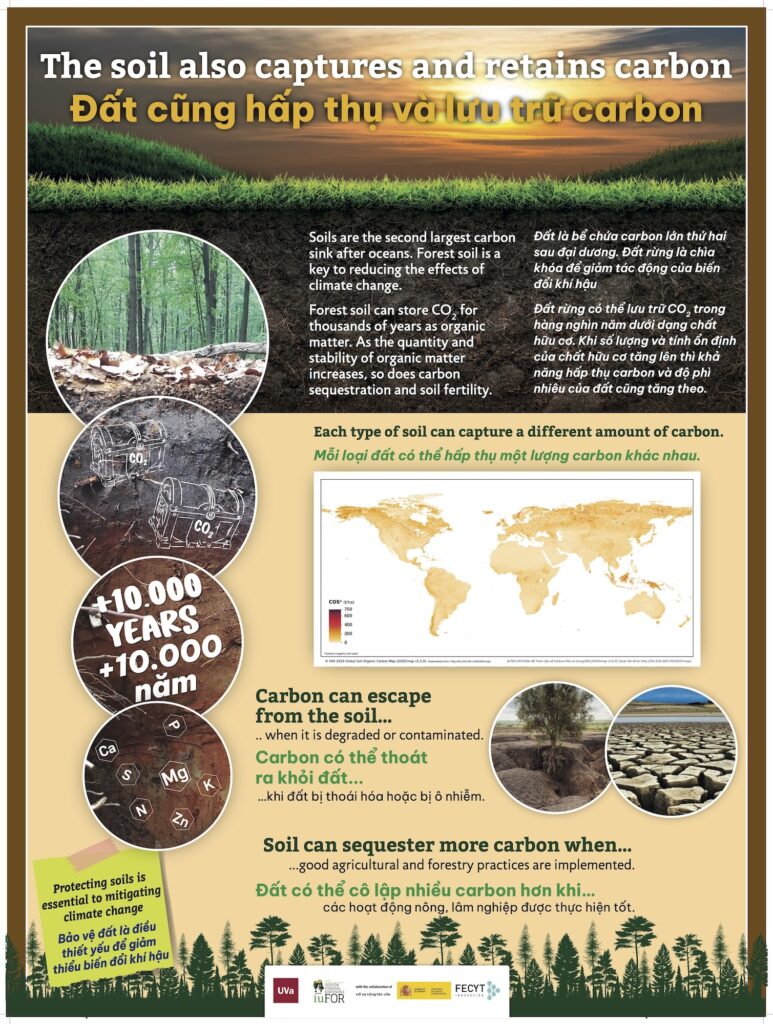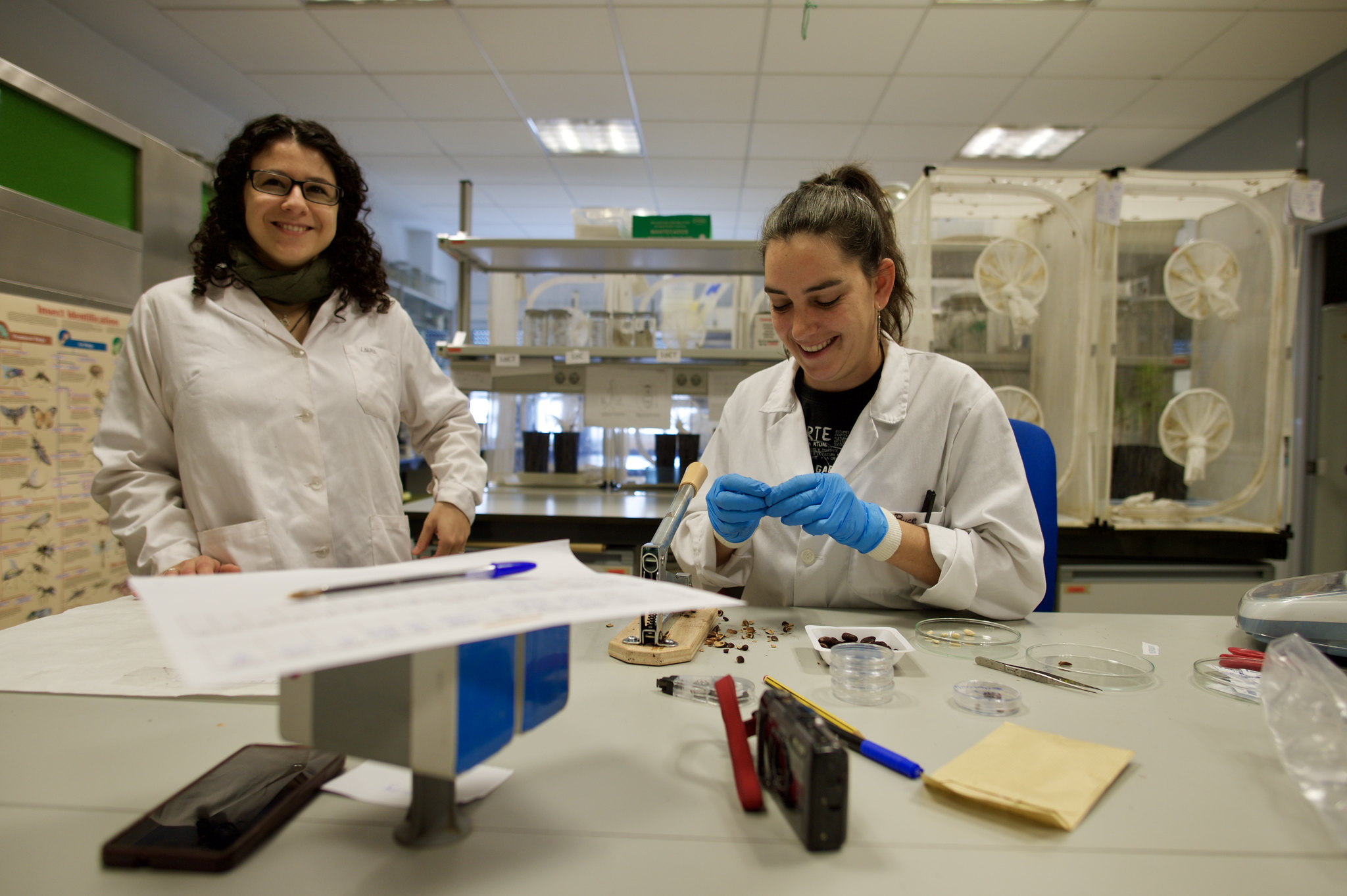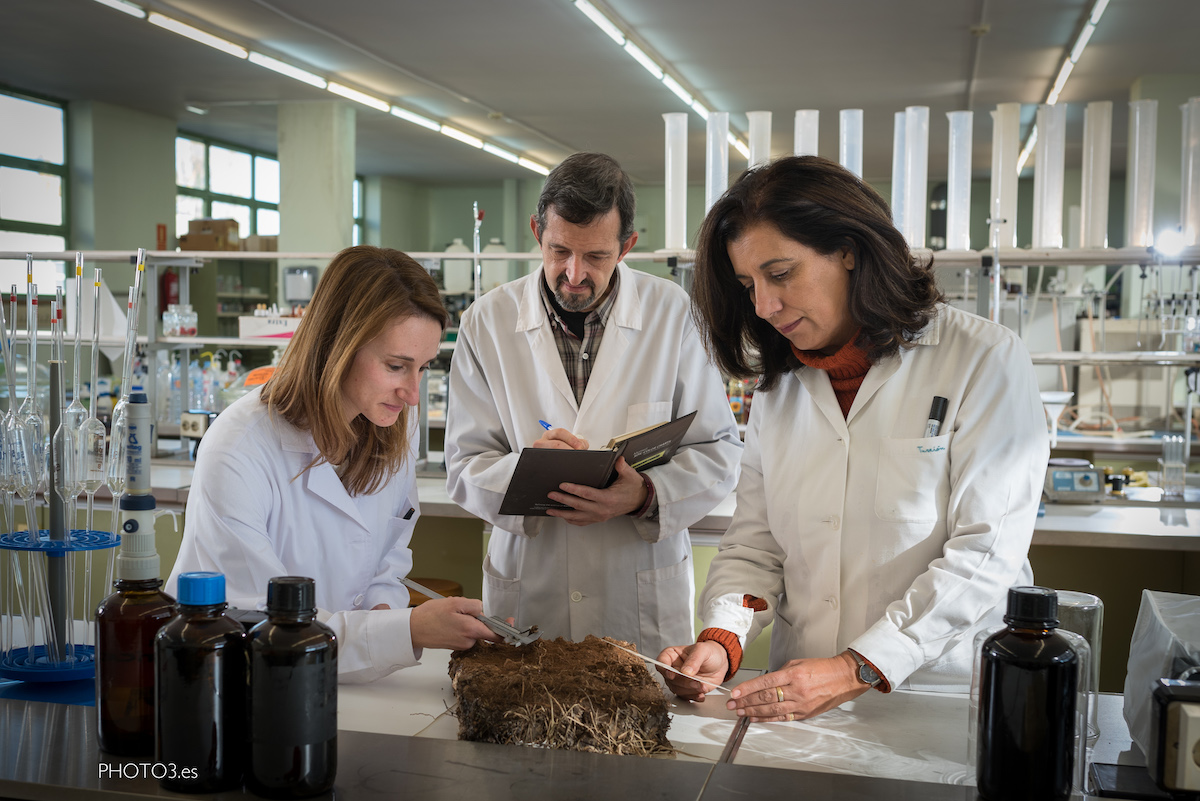Forests have been identified as important carbon sinks, but where is carbon stored, and how is it distributed in forests?
Among greenhouse gases, CO₂ has shown the fastest increase in atmospheric concentration and is the primary driver of global temperature rise. There are natural systems capable of removing some CO₂ from the atmosphere—these are known as carbon sinks.
What are carbon sinks?
Carbon sinks are natural systems (oceans, vegetation, and soils) and artificial systems (certain technologies still in development) that absorb more CO₂ from the atmosphere than they release. This carbon storage or sequestration is temporary, as CO₂ can eventually be returned to the atmosphere. For example, a forest absorbs large amounts of CO₂, which is released back into the atmosphere when it burns.
Why is it important to study and enhance carbon sinks?
To increase the CO₂ capture capacity of these sinks, it is essential to understand how they work. By doing so, they can become allies in reducing (“mitigating”) the effects of climate change. For instance, plants absorb CO₂ and incorporate carbon into their tissues through photosynthesis.
Emissions and sinks: a delicate balance
Forests hold one-third of the carbon fixed in terrestrial ecosystems, but there are other carbon sinks as well. While this is excellent, there is a serious problem with emissions: carbon sinks have limits and cannot absorb everything.
Forests have significant potential to remove CO₂ from the atmosphere, thereby reducing the concentration of one of the most important greenhouse gases.
Vegetation sequesters carbon
An ecosystem is a collection of organisms (plants, animals, and microorganisms) that interact with each other and with the physical environment in which they live. Ecosystems where trees predominate are forests or forest ecosystems. In addition to trees, forests support other life forms—shrubs, grasses, fungi, animals, etc.—which are essential for ecosystem balance and carbon fixation.
Well-preserved forests are natural carbon sinks. But be aware that if they are not well-maintained, they can act as emitters instead. Each forest is unique, with varying carbon sequestration potential. Conserving forests in good condition is essential to reducing and reversing climate change.
Soils also sequester carbon
Healthy soils are the second-largest carbon sink after oceans. Forest soils are key to mitigating climate change. This storage can last for thousands of years in the form of organic matter. Furthermore, the greater the quantity and stability of organic matter, the higher the carbon sequestration and the greater the soil fertility.
Each soil type sequesters a different amount of carbon. Carbon can escape from the soil when it is degraded or contaminated. Soils can sequester more carbon when good agricultural and forestry practices are employed.
